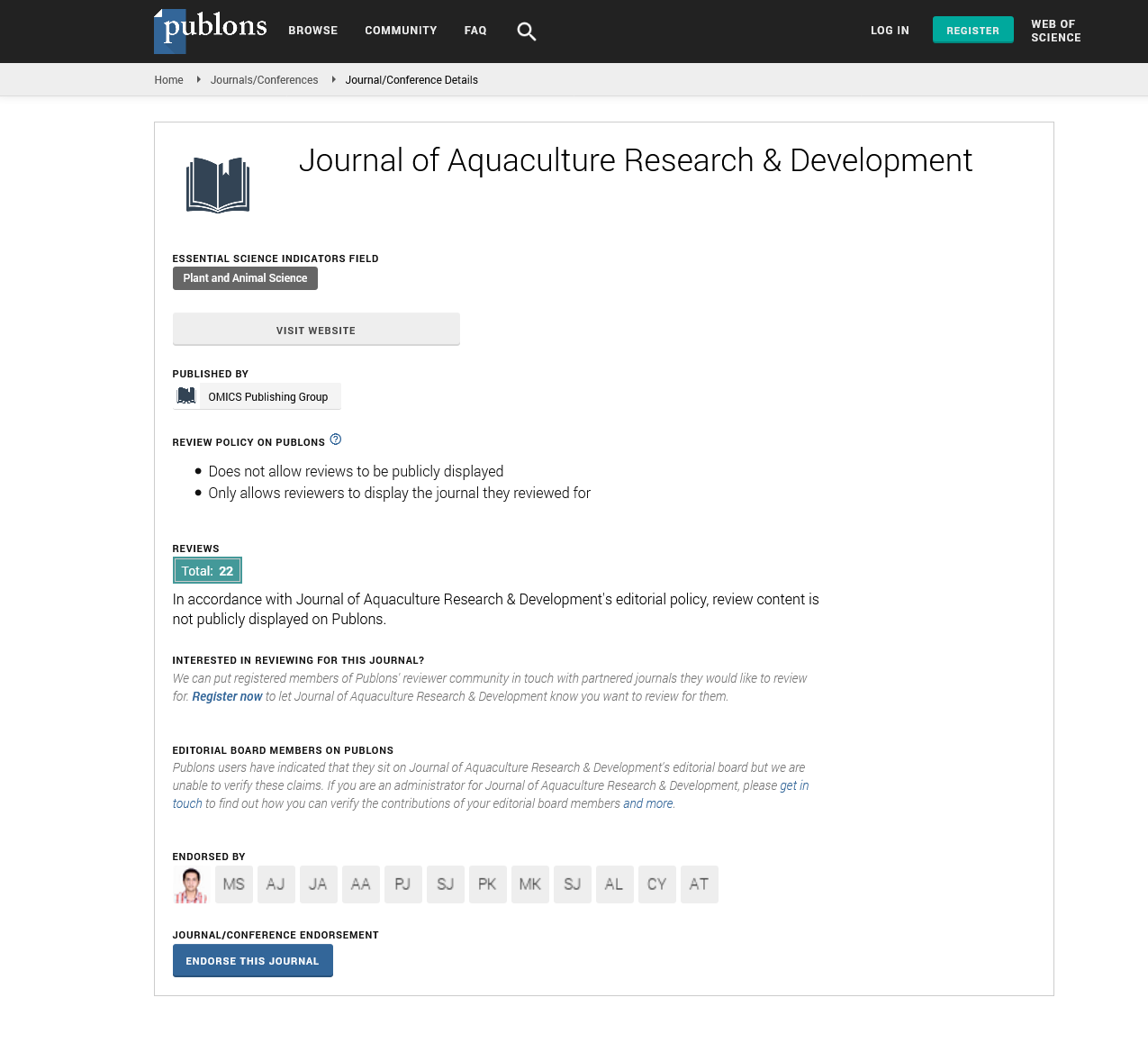Indexed In
- Online Access to Research in the Environment (OARE)
- Open J Gate
- Genamics JournalSeek
- JournalTOCs
- Scimago
- Ulrich's Periodicals Directory
- Access to Global Online Research in Agriculture (AGORA)
- Electronic Journals Library
- Centre for Agriculture and Biosciences International (CABI)
- RefSeek
- Directory of Research Journal Indexing (DRJI)
- Hamdard University
- EBSCO A-Z
- OCLC- WorldCat
- Scholarsteer
- SWB online catalog
- Virtual Library of Biology (vifabio)
- Publons
- MIAR
- University Grants Commission
- Euro Pub
- Google Scholar
Useful Links
Share This Page
Journal Flyer

Open Access Journals
- Agri and Aquaculture
- Biochemistry
- Bioinformatics & Systems Biology
- Business & Management
- Chemistry
- Clinical Sciences
- Engineering
- Food & Nutrition
- General Science
- Genetics & Molecular Biology
- Immunology & Microbiology
- Medical Sciences
- Neuroscience & Psychology
- Nursing & Health Care
- Pharmaceutical Sciences
Perspective - (2025) Volume 16, Issue 3
Microalgal Processing of Brewery Effluents for Feed and Soil Applications
Kiah Sharif*Received: 25-Feb-2025, Manuscript No. JARD-25-29149; Editor assigned: 27-Feb-2025, Pre QC No. JARD-25-29149 (PQ); Reviewed: 13-Mar-2025, QC No. JARD-25-29149; Revised: 20-Mar-2025, Manuscript No. JARD-25-29149 (R); Published: 27-Mar-2025, DOI: 10.35248/2155-9546.25.16.976
Description
The brewing industry generates substantial volumes of nutrient-rich wastewater and organic by-products, posing a challenge for waste management and environmental protection. Side streams from breweries including spent grains, process water and surplus yeast contain significant levels of nitrogen, phosphorus, organic carbon and residual sugars. These streams, if discharged untreated, can contribute to aquatic pollution and eutrophication. At the same time, the presence of valuable nutrients makes brewery waste an attractive candidate for bioremediation and resource recovery.
Microalgae have gained increasing interest for their capacity to utilise organic and inorganic nutrients from waste sources. Among various species, Nannochloropsis, a genus of eustigmatophyte microalgae, has drawn particular attention due to its robust growth in diverse conditions and its potential to convert waste substrates into biomass rich in lipids, proteins and micronutrients.
Brewery waste composition
Brewery effluents vary depending on the production process but typically include spent grains, trub (residual hops and proteins), process water from cleaning operations, and surplus yeast. These waste streams often have high Biochemical Oxygen Demand (BOD), Chemical Oxygen Demand (COD), suspended solids and concentrations of nitrogen and phosphorus.
Traditional treatment methods such as anaerobic digestion, filtration and activated sludge systems are effective but often energy-intensive and generate secondary waste. Integrating microalgal bioremediation offers an opportunity to reduce treatment costs, improve water quality and recover nutrients for subsequent use.
Growth of Nannochloropsis
Nannochloropsis can be cultivated directly in diluted brewery wastewater, utilising available nitrogen and phosphorus for growth. Several studies have demonstrated successful biomass production in media derived from spent grain extracts, yeast residues, and clarified process water. Adjustments in pH, nutrient concentrations and light availability are often required to optimise growth.
Co-cultivation with bacterial consortia or pretreatment steps may also enhance nutrient availability and reduce the inhibitory effects of specific organic compounds. By integrating photobioreactor or open pond systems with brewery effluent flows, a semi-continuous or batch culture system can be established, enabling both nutrient removal and biomass accumulation.
Biomass processing and product streams
The harvested biomass can be processed using centrifugation, filtration and drying methods. Depending on the desired end-product, further fractionation steps such as lipid extraction, enzymatic hydrolysis, or fermentation can be applied.
Aquaculture feed: Microalgal biomass contains the essential amino acids and fatty acids suitable for fish and shrimp diets. Whole or defatted biomass can be incorporated into feed pellets as a protein and lipid supplement. Studies have shown that replacing a portion of fishmeal or soybean meal with Nannochloropsis can maintain or improve growth performance in aquaculture species such as tilapia, seabream and shrimp.
Bio-fertilizers: The residual biomass or digestate from algal processing can be applied as an organic fertilizer, contributing nitrogen and phosphorus, potassium and trace minerals to soils. Algal bio-fertilizers improve soil texture, water retention and microbial activity. When applied to crops, they can support plant growth while reducing dependence on synthetic fertilizers.
Environmental and economic benefits
Using Nannochloropsis for bioremediation reduces nutrient discharge into water bodies and lowers the ecological footprint of brewery operations. This approach helps breweries meet regulatory standards while turning waste into resources.
Economically, the co-production of high-value feed and fertilizer adds new revenue streams. The algal system also reduces reliance on synthetic inputs in aquaculture and agriculture, supporting more sustainable production chains.
The use of Nannochloropsis for the bioremediation of brewery side streams presents an integrated solution to waste management, feed production and soil enrichment. Its nutrient uptake efficiency, biomass versatility and adaptability make it a suitable candidate for circular bioeconomy initiatives. While operational challenges exist, ongoing research and field trials are steadily refining the approach. By aligning brewery operations with algal cultivation, resource recovery can be achieved with both environmental and economic gains, contributing to more sustainable industrial and agricultural practices.
Citation: Sharif K (2025). Microalgal Processing of Brewery Effluents for Feed and Soil Applications. J Aquac Res Dev. 16:976.
Copyright: © 2025 Sharif K. This is an open-access article distributed under the terms of the Creative Commons Attribution License, which permits unrestricted use, distribution, and reproduction in any medium, provided the original author and source are credited.

